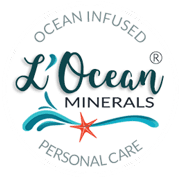Sad but true……….The latest updates have been published regarding our lifeline barrier, our skin. It’s under attack by the environment and greedy corporations. The term “skin care” has been abused and misused as a marketing expression by large manufacturers who inject personal care products with toxins because they are cheaper than nature-sourced alternatives.
Please, Please, Please check the ingredients in your personal body care products. These “care” products are, for the most part, ineffective in delivering what we are told they will do for us. The minimal quantity of “natural” additives are overshadowed by additives that are man-made, toxic, carcinogenic, hormone disrupting, petroleum-based and detrimental to our health. Most of these falsely advertised care products make our skin more vulnerable to: 1) sun damage from ozone depletion, 2) air and water pollution and 3) allergic reactions to these synthetic and toxic ingredients.
I was absolutely blown away by the following widely-published articles……Please look through them. I know there’s lots of technical information in them but the bottom line is scary!!!!
Household chemicals now pollute more than cars
By Andy Fell, UC Davis Tuesday, February 20, 2018
Petroleum-based chemicals in consumer products like soaps and paints drift into the air and
contribute as much as car emissions do to processes leading to air pollution, a new Los
Angeles-based study suggests.
Quick summary
• As transportation emissions fall, other oil-based products contribute more to air pollution
• Consumer products can cause high levels of indoor air pollution, but also contribute to outdoor
air pollution
• New study closes gap between predictions and data
Consumer products such as shampoo, cleaning products and paint now contribute
as much to urban air pollution as tailpipe emissions from vehicles, according to a
new study by NOAA and including researchers at the University of California, Davis.
The results are published Feb. 16 in the journal Science.
“What’s exciting about this work is that it shows that everyday consumer choices can have an
impact on air quality in the U.S.,” said Christopher Cappa, professor of civil and environmental
engineering at UC Davis and a co-author on the paper.
People use a lot more fuel than they do petroleum-based compounds in chemical products —
about 15 times more by weight, according to the new assessment. Even so, lotions, paints and
other products contribute about as much to air pollution as does the transportation sector. In the
case of one type of pollution — tiny particles that can damage people’s lungs — particle-forming
emissions from chemical products are about twice as high as those from the transportation sector,
the team found.
“As transportation gets cleaner, those other sources become more and more important,” said team
leader Brian McDonald, a scientist in the Cooperative Institute for Research in Environmental
Sciences, University of Colorado Boulder, working in NOAA’s Chemical Sciences Division.
The scientists focused on volatile organic compounds or VOCs that can waft into the atmosphere
and react to produce either ozone or particulate matter — both of which are regulated in the
United States and many other countries because of health impacts, including lung damage.
Vehicle emissions cut by regulation, technology
Over the past few decades, regulators and car manufacturers have made pollution-limiting changes to engines, fuels and gas pumps. McDonald and his colleagues reassessed air pollution sources by sorting through recent chemical production statistics compiled by industries and regulatory agencies, by making detailed atmospheric chemistry measurements in Los Angeles air, and by evaluating indoor air quality measurements made by others.
The scientists concluded that in the U.S., the amount of VOCs emitted by consumer and industrial products is actually two or three times greater than estimated by current air pollution inventories, which also overestimate vehicular sources. For example, the Environmental Protection Agency estimates that about 75 percent of VOC emissions (by weight) come from vehicular sources, and about 25 percent from chemical products. The new study, with its detailed assessment of up-to-date chemical use statistics and previously unavailable atmospheric data, puts the split closer to 50-50.
The disproportionate air quality impact of chemical product emissions is partly because of a fundamental difference between those products and fuels.
“Gasoline is stored in closed, hopefully airtight, containers and the VOCs in gasoline are burned for energy,” said NOAA atmospheric scientist Jessica Gilman. “But volatile chemical products used in common solvents and personal care products are literally designed to evaporate. You wear perfume or use scented products so that you or your neighbor can enjoy the aroma. You don’t do this with gasoline,” Gilman said.
Closing gap between models and measurements
Cappa said that there has been a persistent gap between levels of fine particles measured in urban air and predictions from models. The new work has the potential to close this gap, he said.
The team found that they simply could not reproduce the levels of particles or ozone they measured in the Los Angeles area without including emissions from volatile chemical products. They also determined that people are exposed to very high concentrations of volatile compounds indoors.
Credits
Additional authors on the study were: Joost A. de Gouw, Stuart A. McKeen, Yu Yan Cui, Si-Wan Kim, CIRES and NOAA Chemical Sciences Division; Gregory J. Frost, James M. Roberts, Thomas B. Ryerson, and Michael Trainer, NOAA Chemical Sciences Division; Shantanu H. Jathar, Colorado State University and UC Davis; Ali Akherati, Colorado State University; Jose L. Jimenez, CIRES and CU Boulder; Julia Lee-Taylor, CIRES and National Center for Atmospheric Research; Patrick L. Hayes, Universite of Montreal; Drew R. Gentner, Yale University; Gabriel Isaacman, NCAR; VanWertz, Virginia Tech; Allen H. Goldstein and Robert A. Harley, UC Berkeley.
This research was supported by NOAA, the CIRES Visiting Fellowship Program, Aerodyne Research, Inc., the National Science Foundation and the Sloan Foundation. CIRES is a partnership of NOAA and the University of Colorado Boulder.
